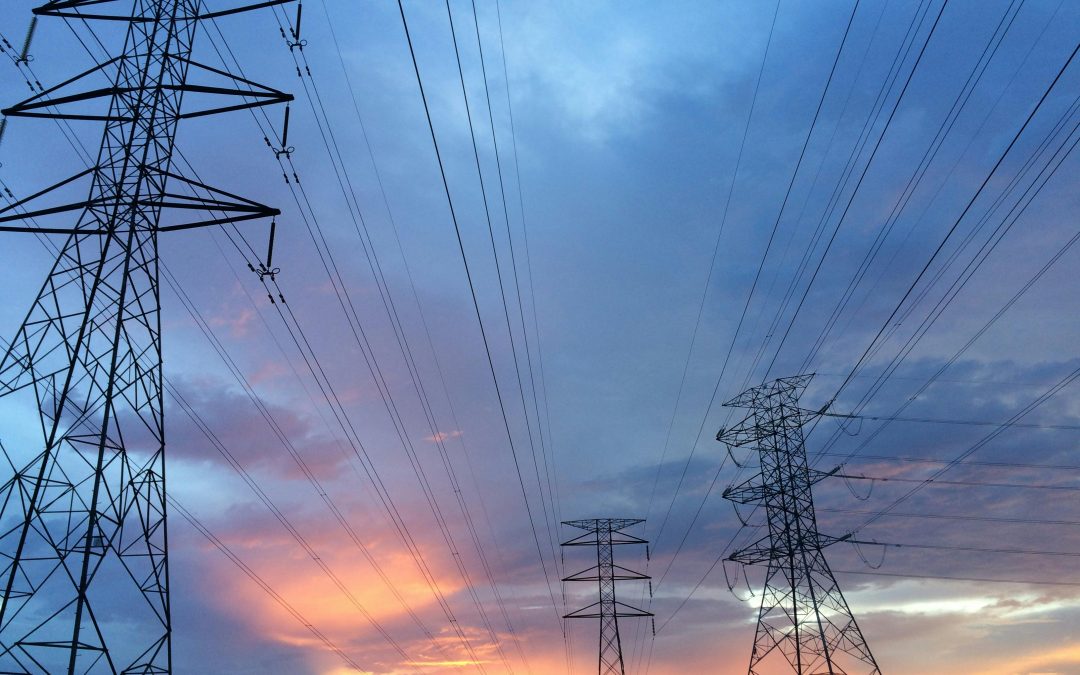____________________________________________________________________________________________________________________
TL;DR
Power outages in the Philippines often happen due to limited supply, extreme weather, or aging power infrastructure. To prevent total blackouts, utilities implement rotational brownouts that temporarily cut power in select areas.
- Power is managed through rotational outages to balance the grid.
- Typhoons, heatwaves, and floods can damage transmission lines and power stations.
- Outdated systems struggle to meet the country’s rising electricity demand.
- Solar energy with battery storage offers a reliable backup during scheduled brownouts.
____________________________________________________________________________________________________________________
Rotational brownouts, or scheduled power interruptions that often hit without warning, have become part of daily life across many parts of the Philippines. You might experience one in the middle of a workday, during a family dinner, or right when you need electricity the most.
These outages typically occur during the dry season or when the country’s power supply struggles to meet demand. And while they’re inconvenient, they’re not random. There’s a system behind them, and understanding how it works can help you plan effectively.
Whether you own a business, manage a household, or want to minimize the disruption, it pays to know why power outages in the Philippines happen, how they’re implemented, and what you can do when they hit. This guide breaks it all down and offers practical tips to keep you one step ahead.
Power Outages in the Philippines: What Are They and Why Do They Happen
When people refer to a “brownout” in the Philippines, they typically mean any power interruption. Technically, a brownout is a voltage drop, whereas a blackout is a complete loss of power. But in local usage, they all fall under the same umbrella: power outages.
Rotational brownouts are scheduled outages meant to reduce the load on the power grid. They help prevent a total system failure when electricity demand outweighs supply. The Department of Energy (DOE) and the National Grid Corporation of the Philippines (NGCP) often release rotational brownout advisories when power generation dips below demand.
But not all brownouts are intentional. Here are the most common causes:
1. Severe weather and natural disasters
Natural disasters pose significant threats to power infrastructure, with events like typhoons, lightning, heatwaves, and flooding frequently damaging power lines, substations, and transformers.
- Typhoons and high winds can inflict mechanical damage by knocking down poles and ripping cables from their connections.
- Lightning strikes present an electrical hazard, capable of frying components or causing secondary damage by bringing down trees that fall on lines.
- Heavy rains and floods can lead to immediate operational issues, triggering landslides that take out lines or causing short circuits from water intrusion.
- Extreme heat strains equipment, leading to overheating and potential failures.
- More catastrophic events like earthquakes and volcanic activity can cause widespread infrastructure damage that may take days—or even weeks—to repair.
2. Fallen trees and vegetation
Trees pose a continuous risk to power stability even when there’s no extreme weather. Overgrown branches can sag directly into power lines, while diseased or weakened trees may unexpectedly topple onto them. This threat worsens during storms or when the surrounding vegetation isn’t regularly cleared near electric infrastructure.
3. Equipment failure and aging infrastructure
Aging infrastructure contributes to system failures. In areas where power systems haven’t been upgraded in decades, it’s not unusual for transformers, wires, and other equipment to fail under stress, especially during peak consumption hours. Furthermore, deterioration is an underlying issue: materials such as cracked insulation and corroded connectors can cause sudden blackouts even without external stress.
4. Animal interference
Wildlife is a frequent culprit in power disruptions. Birds, snakes, rats, and even insects often nest in or chew on electrical equipment. When these animals make contact with high-voltage parts, they can immediately cause a short circuit that trips the entire system.
5. Human activities and accidents
Human activity accounts for a significant amount of infrastructure damage, often resulting in unexpected outages.
- Accidental damage – Drivers can knock down utility poles in car accidents, while construction crews may inadvertently strike underground cables or overhead wires during their work.
- Deliberate damage – Thieves actively contribute to equipment failure by stripping copper wiring for scrap, severely damaging the infrastructure in the process.
- Maintenance errors – Even small, preventable mistakes—such as ladders brushing too close to live wires during routine maintenance—can trigger immediate blackouts.
6. Planned outages and load management
Not all outages are accidental; power providers intentionally schedule them to conduct essential maintenance or prevent catastrophic grid damage. Similarly, during times of crisis—like extreme heat or fuel shortages—providers use rotational brownouts as a calculated measure to stabilize the grid by distributing a limited supply across affected regions.
While interruptions are inconvenient, these planned outages are often the necessary move to avoid a total blackout.
7. Grid overload and high demand
Peak power demand creates a strain on the electrical grid. When air conditioning units are running, businesses are operating at full tilt, and everyone is using power simultaneously, the system’s capacity can be quickly overwhelmed. This grid overload means the utility can’t keep up with the demand, forcing companies to initiate a brownout to protect the system from crashing altogether.
8. Transmission and distribution line faults
Even a single localized fault can cascade into a major power outage. These faults—which are often caused by a damaged insulator, a burnt cable, or a loose connection—can shut down electricity supply to entire neighborhoods. While such isolated issues are typically easier to fix than widespread damage, they still disrupt daily life, particularly if repair crews face delays in accessing the affected area.
9. Cybersecurity threats (emerging risk)
As the electrical grid undergoes digitization, the risk of cyberattacks has become a genuine and growing concern. A coordinated attack could allow hackers to turn off control systems, block power transfers, or manipulate load settings. While currently rare, this threat is increasing rapidly as more critical power infrastructure moves online.
How Professionals Address Brownouts in the Philippines
When the power goes out, utility companies follow a step-by-step process to restore electricity safely and efficiently. Here’s how power restoration typically works in the Philippines.
1. Inspect damage and secure safety hazards
Utility crews immediately identify risks such as live wires, fallen poles, and damaged transformers. In many cases, drones or engineers assess the situation and send updates back to control centers.
Tree contractors and forestry crews may also help clear blocked roads or remove damaged vegetation to speed up repairs.
2. Prioritize power restoration for emergency services
Once danger zones are secured, the next priority is restoring electricity to critical sites, like hospitals, fire and police stations, water treatment facilities, and communication centers. Homes with residents on life support or medical equipment are also prioritized.
3. Repair transmission lines and substations
Next, crews stabilize the grid by repairing high-voltage transmission lines and substations. If a substation goes down, restoring even one fuse can bring back power to multiple barangays.
When the problem originates from a large electricity supplier, local providers must coordinate with the NGCP before they can restore local service.
4. Restore power along main distribution feeders
These are the major lines branching from substations to towns and business districts. Fixing them restores electricity to the largest number of customers at once.
5. Reconnect neighborhood and local distribution lines
Once the main lines are operational, crews shift to smaller neighborhood lines that carry power into streets and subdivisions. Some areas now use smart switches that temporarily reroute power from another circuit, reducing downtime for many communities.
6. Repair service lines leading to individual customers
If your house lacks power while your neighbors have it, the issue might be your individual service line. The utility company handles everything up to your meter; beyond that (ex., a damaged mast or panel) is your responsibility. In such cases, you’ll need a licensed electrician for repairs.
7. Test and monitor the system
Once everything’s reconnected, providers run system-wide checks to confirm grid stability. Sometimes, they make temporary fixes to restore power faster, then return later for permanent repairs.
The Bright Side of a Blackout
While power outages in the Philippines may be a fact of life, they don’t have to catch you unprepared. By understanding how the grid works and why outages occur, you can plan smarter and respond faster to disruptions.
For those seeking a definitive, long-term solution, SolarNRG can provide reliable backup power. Our home solar panels, expertly paired with battery storage, allow you to capture excess energy and automatically use it when the grid fails. This setup ensures you stay powered during brownouts while also providing long-term savings.
Explore our solar services today and start powering your home or business with clean, reliable energy.
____________________________________________________________________________________________________________________
FAQs
1. What are rotational brownouts in the Philippines?
Rotational brownouts are scheduled power interruptions where electricity is temporarily cut off in specific areas. The goal is to balance power supply during shortages and prevent large-scale blackouts.
2. Why do rotational brownouts happen?
They occur when electricity demand exceeds available generation, especially during dry or hot months when air conditioning use spikes or when several power plants go offline for maintenance.
3. What causes frequent power outages in the Philippines?
Outages often stem from supply shortages, natural disasters, or aging infrastructure that can’t support growing demand. Typhoons and heavy rains can also topple power lines or flood substations.
4. How do power companies restore electricity?
Technicians from NGCP, MERALCO, or local cooperatives inspect damaged lines, restore balance in the power grid, and reroute electricity to affected areas.
5. How can households prepare for rotational brownouts?
Monitor advisories from NGCP or your local utility, charge devices early, and keep flashlights, fans, and emergency kits ready. If possible, invest in battery packs or generators for essential appliances.
6. Can solar power help during brownouts?
Yes. A solar system with battery storage lets you store and use energy when the grid is down, keeping lights and essential devices running during power interruptions.
____________________________________________________________________________________________________________________


Recent Comments